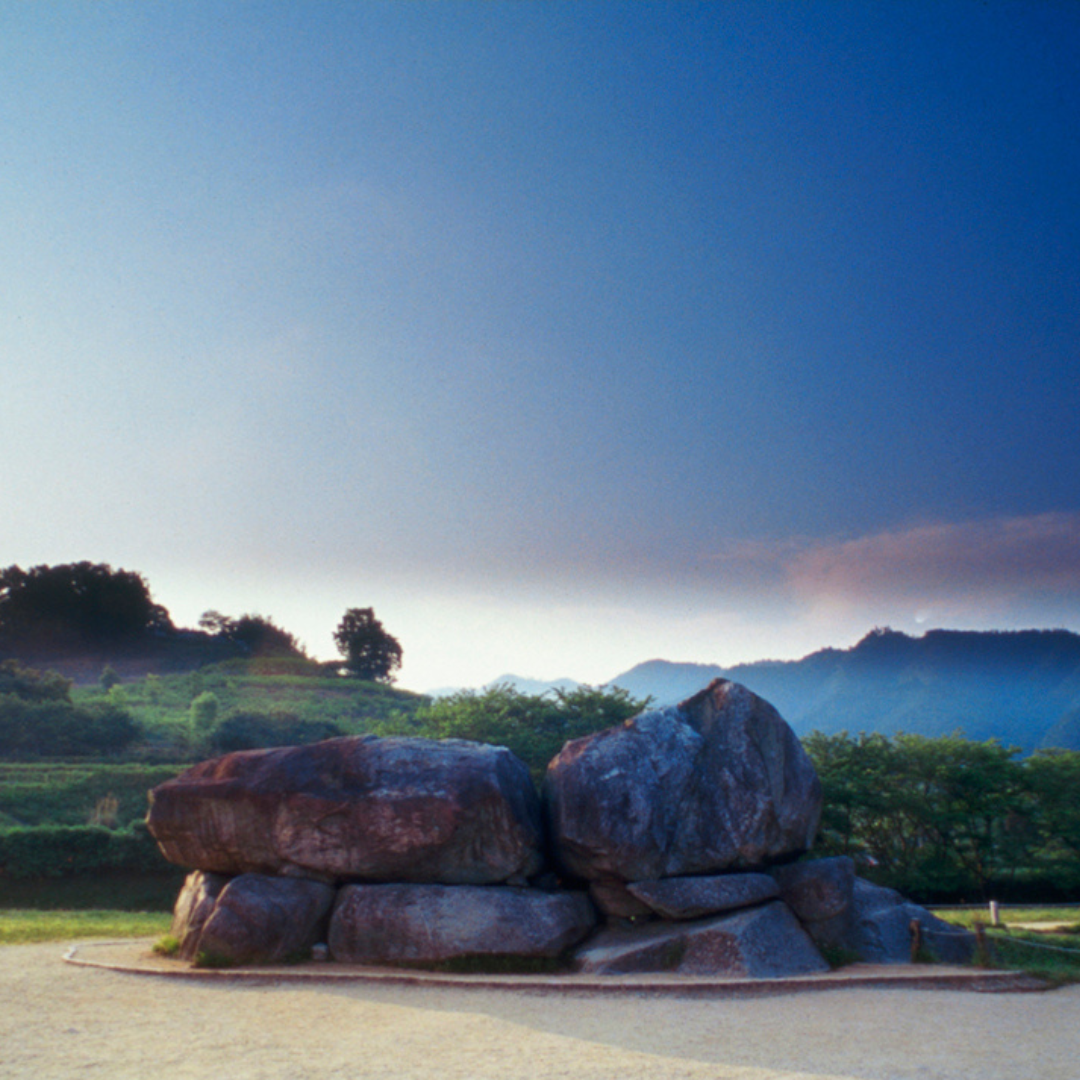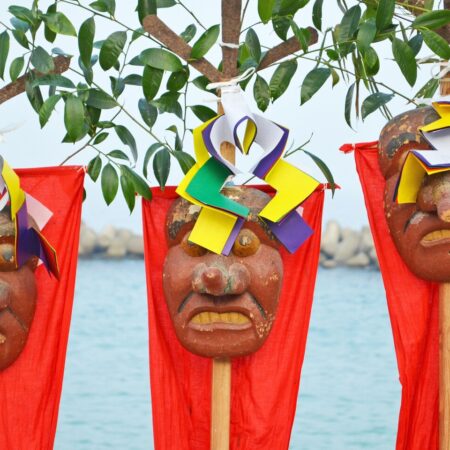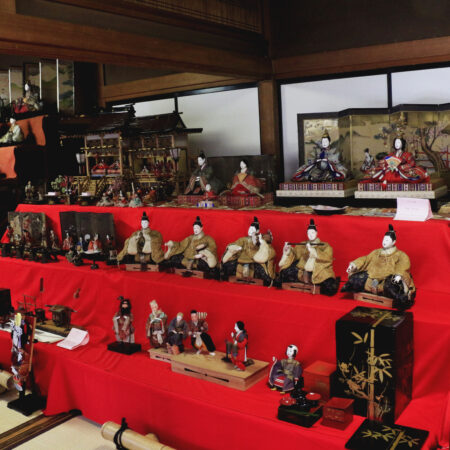Did you know? The Ishibutai Kofun in Asuka Village, Nara Prefecture.
This time, I introducing the iconic relic of the Asuka period, the Ishibutai Kofun.
The Mysteries and Charms of Ancient Japan
The Ishibutai Kofun, located in Asuka Village, Nara Prefecture, is one of the most iconic relics of the Asuka period.
This gigantic tomb fascinates many tourists and history enthusiasts with its grandeur and mysterious history.
Today, we delve into the charm of the Ishibutai Kofun, exploring its historical and cultural background in detail.
Overview of the Ishibutai Kofun
The Ishibutai Kofun, believed to have been built in the early 7th century, is a horizontal stone chamber tomb located in the center of the Ishibutai area of the Asuka Historical National Government Park. It is known as one of the largest square tombs in Japan. The unique feature of this kofun is that all the mound's soil has completely disappeared, revealing the enormous two-sleeved horizontal stone chamber. This indicates that the soil, which originally formed the shape of the tomb, is entirely gone. Typically, tombs have a stone chamber built atop a mound of piled-up soil, but in the case of the Ishibutai Kofun, the soil has completely disappeared, leaving only the stone chamber exposed. Additionally, the top of the ceiling stone is broad and flat, resembling a stage, hence the name "Ishibutai" (stone stage).

What is a Horizontal Stone Chamber Tomb?
A horizontal stone chamber tomb features a burial chamber (stone chamber) dug horizontally into the ground, with a passageway (dromos) leading into the burial chamber. Below is an explanation of the differences between horizontal stone chamber tombs and regular tombs.
Features of Horizontal Stone Chamber Tombs
- Stone Chamber Structure: Horizontal stone chamber tombs have a stone chamber dug horizontally into the ground, allowing entry through the dromos. They are often constructed with massive stones, like the Ishibutai Kofun, making the chambers sturdy and long-lasting.
- Ease of Access: The horizontal excavation allows relatively easy access even after burial, facilitating reuse or additional burials in later periods.
- Cultural Background: Horizontal stone chamber tombs were built across Japan mainly from the 6th to 7th centuries, particularly in Kyushu and Kanto regions, to showcase the authority of the ruling elite.
Features of Regular Tombs
- Keyhole-Shaped Kofun: These tombs, common during Japan's Kofun period (3rd to 7th centuries), feature a unique keyhole shape with a round rear and a square front, built primarily for emperors, nobility, and influential families.
- Vertical Stone Chamber: Regular tombs typically have vertical stone chambers, making post-burial access difficult to protect the buried remains and grave goods.
Charm of the Ishibutai Kofun
1. Grand Stone Chamber
Visitors are awestruck by the enormous stone chamber. Stepping inside reveals the remarkable skills and efforts of ancient craftsmen. The total weight of the approximately 30 rocks used is about 2,300 tons, with the ceiling stone alone weighing around 77 tons. This highlights the advanced civil engineering and transportation techniques of the time. Moreover, the stone chamber remains cool even in summer, creating a unique atmosphere.
2. Beautiful Natural Environment
The Ishibutai Kofun is surrounded by picturesque rural scenery. Walking through this area, especially in spring when cherry blossoms are in full bloom or in autumn when the leaves turn beautiful colors, offers a special experience of ancient history.
3. Fusion of History and Culture
Around the Ishibutai Kofun, there are other relics and ancient structures from the Asuka period, such as Asuka-dera (Hoko-ji Temple), Amakashi-no-Oka, and the Takamatsuzuka Kofun. Touring these sites provides insights into the culture and lifestyle of ancient Japan, offering a deeper connection to history.
Mysterious Builder
The builder of the tomb is not definitively known, but it is speculated to be the tomb of Soga no Umako, a powerful figure in the early 7th century and grandfather of Soga no Iruka, who was overthrown in the Taika Reform. Excavations conducted between 1933 and 1935 confirmed the presence of a square mound, moat, and outer moat, along with the destruction of smaller 6th-century kofun for its construction. These findings suggest it was built in the early 7th century.
Historical Records of the Ishibutai Kofun
Historical documents indicate that the Ishibutai Kofun has long lost its mound's topsoil, exposing the ceiling stones of the stone chamber. Motoori Norinaga's "Kankasa Diary" from 1772 mentions this, associating the Ishibutai Kofun with the nearby Miyatsuka Kofun, each holding legends of emperors Suiko and Youmei. Tsukawa Nagamichi's "Utsushihana Diary" from 1829 speculates it might be the tomb of Soga no Umako. In 1848, Akatsuki Kanenari's "Saigoku Sanjusansho Meisho Zue" describes it as a temporary burial place for Emperor Tenmu, depicted with an illustration.
Visitor Information
- Opening Hours: 9:00 AM - 5:00 PM (last admission at 4:45 PM) *Revised in October 2023
- Closed: Open year-round
- Admission Fee: Adults 300 (250) yen, Students (high school to elementary school) 100 (50) yen *Group rates (30 or more) are shown in parentheses
- Access: 3-minute walk from the "Ishibutai" bus stop
- Parking: Available (paid)
- Location: 133 Shimasho, Asuka Village, Takaichi District, Nara Prefecture
- Contact: Asuka Tourist Association - 0744-54-3240
Summary
The Ishibutai Kofun is a magnificent tourist destination filled with the mysteries and charms of ancient Japan. The grand stone chamber, beautiful natural surroundings, and the culture of the Asuka period offer unforgettable experiences for visitors. Be sure to visit and experience the history of Nara for yourself.


